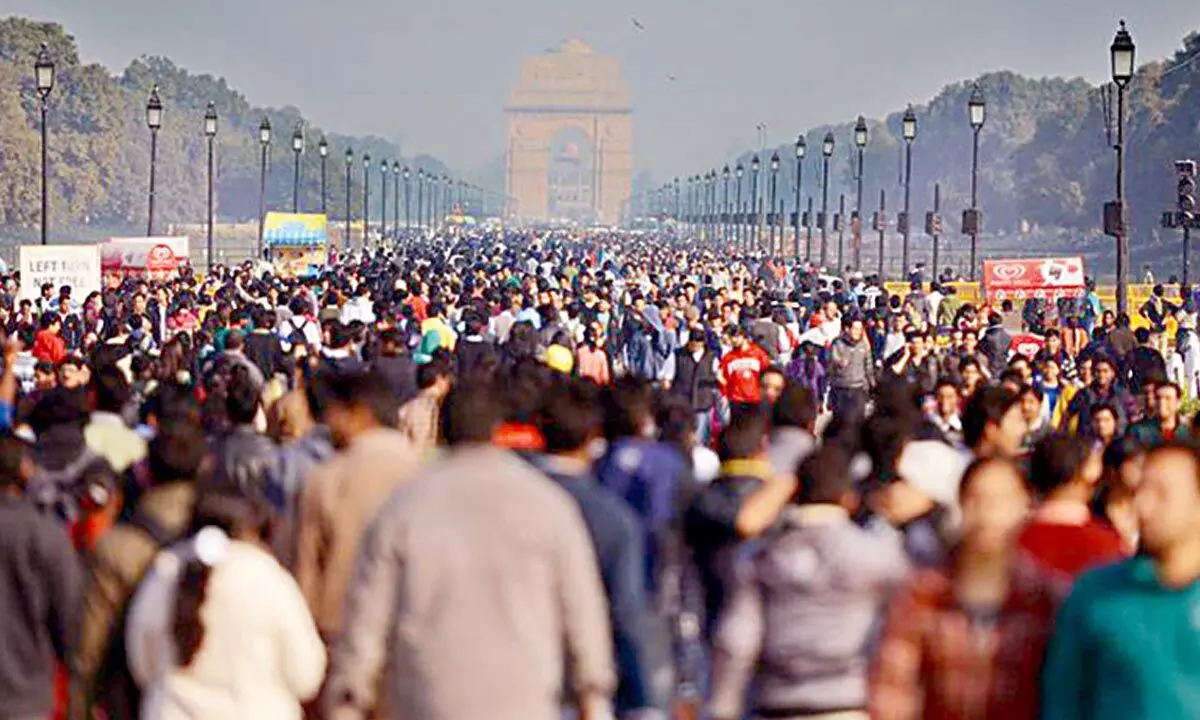Challenges one too many for India as the most populous nation
India can have the edge over China in middle and low-end production industries
image for illustrative purpose

According to a report by McKinsey & Company, over the decade to 2030, India needs to create at least 90 million new non-farm jobs to absorb the 60 million new workers, who will enter the workforce, based on current demographics. For gainful and productive employment growth of this magnitude, the GDP has to grow by 8.0-8.5 per cent annually over the next decade
The UN Department of Economic and Social Affairs (UNDESA) indicated in its July 2022 World Population Prospects report that India was projected to surpass China as the world's most populous country in 2023. Incidentally, it will happen this Friday. With 1.4 billion people and counting, the country’s population is not expected to peak for decades.
We take a look at what life is like in the country and what lessons India can learn from China. The challenges ahead are numerous: from education to democracy and also as basic as having enough to eat.
From the time the report was released, it is being hotly discussed by both Chinese and Indian people, as both ponder what it means for the two countries.
Whether India can turn its huge population into a demographic dividend depends largely on whether its government can roll out effective economic, social and educational policies to keep pace with the rising population.
According to a report by McKinsey & Company, over the decade to 2030, India needs to create at least 90 million new non-farm jobs to absorb the 60 million new workers, who will enter the workforce, based on current demographics. For gainful and productive employment growth of this magnitude, the GDP has to grow by 8.0-8.5 per cent annually over the next decade.
The population growth may give India an edge to compete with China in middle and low-end production industries. However, labour training in India takes longer and costs more, not to mention that their work efficiency is low. But over the same decades that population growth in India has soared, fertility rates have been falling. In 1964 Indian women had six children on an average while today they have closer to two, in part, due to the state family planning service, which India claims it was the first country to provide when it was launched in 1952.
“The primary goal was to reduce population growth as a means of supporting the economic development of the country, which was only a few years old at that point,” says Anita Raj, Professor of Global Public Health, Director of the Center on Gender Equity and Health, University of California at San Diego.
The scheme has had some successes: India’s 2022 family heath survey found that almost 100% of married women and men aged 15-49 are aware of at least one method of contraception. The public health sector is the provider for 68% of people who use modern contraceptives (products or medical procedures used to prevent pregnancy such as condoms, the pill and IUDs, as opposed to traditional methods such as the withdrawal or rhythm methods or abstinence).
Quite naturally, the expectations are rather high. In a year marked by pessimism and faltering economies, “India remains a bright spot,” said Pierre-Olivier Gourinchas when presenting the International Monetary Fund’s (IMF) economic outlook for 2023. India and China are expected to contribute 50% of the world’s growth this year. Giant corporations like Apple are moving production capacity to the country, and the State Bank of India believes the country will become the world’s third largest economy by 2029. Some are even more upbeat with many saying that “this is India’s decade.”
According to the World Bank, consumer spending in India more than doubled to $2.25 trillion since 2010. There is another dimension to India besides the booming economy.
Despite its vast cultural and ethnic diversity, India is the first developing economy that, from the outset, strove to modernize and prosper through a democratic system. Western corporations started looking more closely at India during the pandemic lethargy caused by Beijing’s zero-Covid strategy, which virtually closed its borders for three years. Friction between the U.S. and China and anxiety about conflict over Taiwan has burnished India’s lustre.
Investment once destined for China is going to other places like North America, India and Southeast Asia, is the stated opinion of experts.
Meanwhile, it has strengthened ties with the west and is part of the Quadrilateral Security Dialogue (the Quad), a strategic security dialogue between Australia, India, Japan and the United States. For the United States, India is a nuclear power that has become an increasingly important counterbalance to China’s growing power in the region. There has been progress, to be sure.
According to the U.N., a record 415 million Indians emerged from “multidimensional poverty” in the last 15 years. But there is still a long way to go — five out of six people living in poverty belong to the lowest tribes and castes in the Indian society. According to Oxfam, 10% of the population owns 77% of the wealth.

